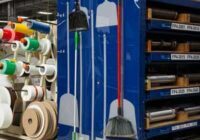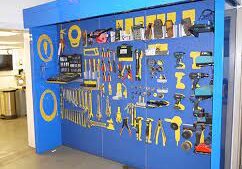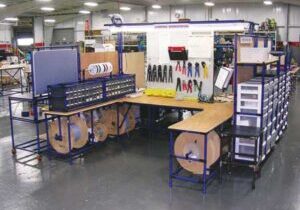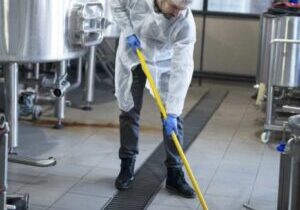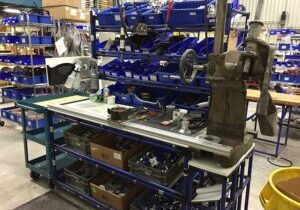What is the 5S Auditing Process?
How does the auditing process work and what are the best practices?
By Andy Pritchard | November 9, 2022 | 2 minute read.
A crucial part of Sustain is completing regular 5S Audits.
Audits will help to maintain the gains of your 5S Action Plan to date and also find new ways to make your workstations more efficient, safe, and productive over time. Audits can be performed in a Gemba walk style format, with members of your 5S committee or management doing floor walks with a structured agenda. Most companies use a 5S audit form that will score a given workstation on how well it achieves the ideals of Sort, Set in Order, and Shine.
Two crucial components of a 5S audit are consistency and the ability to track results over time. Ensure that the standards by which your staff and their workstations are measured remain the same from audit to audit. You will find having an audit template with clear scoring criteria invaluable as over time it will help your staff understand what is expected of them, and your auditors focus on what to look for from audit to audit.
5S Auditing Score Card
Most facilities will start 5S audits using paper audit forms. The advantage of paper forms is they are cheap to work with, can be printed up and stored in a central location, and observations can during your floorwalk using a clipboard and pencil.
The disadvantages to using paper forms revolve around managing audit data, accessibility and efficiency. You also lose the benefits of digital functionality, including automation, permissions and photo capture.
After each audit your auditors will be required to manually tally the 5S score and then enter those scores into some form of database or spreadsheet. Analytics and trending are a key part of a successful 5S implementation, however this can all be very tedious and time consuming work for your 5S committee. If not completed regularly, a lack of data analysis can impede the momentum of your new 5S program.
For this reason, consider a software based digital 5S auditing system such as the one Weever offers. For more details please visit the Benefits to Digitizing 5S Audits below.

Digital Audit Schedule
Another consideration is how you will schedule audits and maintain that schedule. Given all the work you’ve done so far you’ll want to ensure that you have the right tools to Sustain properly. As you have probably discovered if you’re managing an inspection schedule, paper forms are not ideal for ensuring inspections are completed correctly and on time.
Weever has a digital inspections management offering that will help you Sustain and make sure that your 5S audits are being completed. For more details on why digital is the way to go for your inspections schedule see our blog post here: https://weeverapps.com/digitization-mavericks/why-paper-forms-are-insufficient/

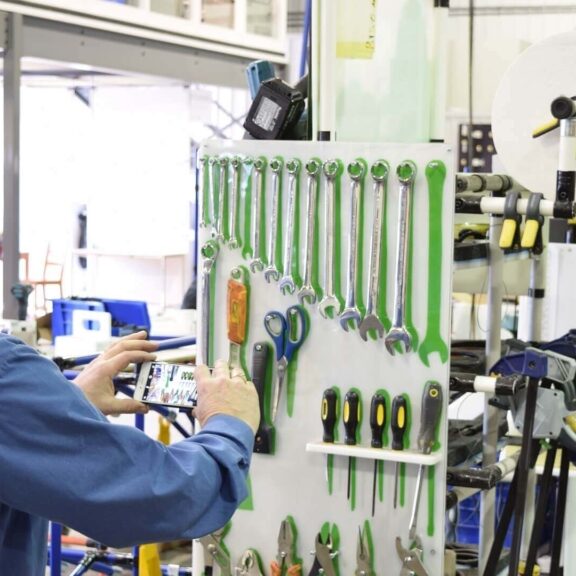
5S Auditing Best Practices
Over the past 10 years Weever has been on the front lines of helping global Fortune 100 manufacturing companies implement and maintain successful 5S programs. We’ve learned a lot from our clientele over the years and we’re happy to share those lessons here. For example, start with a standardized scoring system to maintain consistent expectation and measure success. Here are some other best practices to consider:
Measure Progress Over Time
Record specific incidents and concerns during audits and analyze and follow up on them during subsequent audits. Comparing audit scores over time gives your staff tangible results to guide their ongoing efforts and a sense of accomplishment. If an issue identified from a previous audit remains unresolved consider performing a Root Cause Analysis to get the issue fixed.
Make Your Audits Collaborative
Any 5S audits should be a collaborative exercise between staff and your auditors. Be sure to get the opinions of your staff on how to improve 5S conditions. Who would know better how to make a workspace more efficient than the people working in them?
Avoid “Gotchas”
Avoid using 5S audits as a pretext for disciplining your staff. The view that your audits are used as an excuse for discipline will hurt morale and undermine the momentum of your program. If unsafe or incorrect work behavior is observed during an audit, consider making a note and giving feedback to your staff privately afterwards.
Alternately consider a Behavior Based Safety Observation program as discussed in this blog: https://weeverapps.com/safety-management/behavior-based-safety-a-brief-history/
Be Constructive and Conversational
If there are areas of improvement you have identified at a given workstation during your audit, offer feedback constructively and conversationally. Remember to solicit feedback from your staff, and ask what they think, and be sure to offer praise where work conditions have improved or remained in a good state.
Be Consistent
Schedule your audits at regular intervals, and be sure to reference past audits to maintain continuous improvement efforts and resolve previously identified issues. Make sure that each audit has complete and thorough notes, just in case the auditor changes in between floor walks. This will also help you remember what was discussed in previous audits.
Be a 5S Champion
Don’t miss opportunities to reinforce the ongoing benefits of 5S to your staff during audits. It’s in every employee's best interest for your facility to be as safe, clean, and productive as possible. This will help maintain your program’s momentum and keep the staff engaged. Afterall, everyone prospers when your plant is productive and profitable.
Continue Reading
Why is 5S important?
5S is often one of the first lean manufacturing processes companies implement on their continuous improvement journey.
The Benefits of 5S
Aside from the cultural shift towards lean manufacturing that quick 5S wins can bring for your teams, there are over 50 years of well documented benefits worth discussing.
Step-by-Step Facility-wide Implementation Roadmap
The phases of implementation including the objectives, step-by-step execution strategies, resource necessities, and timeline estimations for each phase.
Practical Guide to 5S Sorting
How to effectively identify and remove unnecessary items from workstations to radically enhance productivity.
Overview of 5S Methodology
The 5S System is a lean manufacturing tool designed to improve efficiency and productivity in your plant by making it more organized and efficient.
How to Sustain with 5S Auditing
Practical guide to sustaining 5S and continuously improving workstation productivity.
How to Standardize in 5S
Ensure processes, procedures, and practices adhere to a defined standard, facilitating consistency and predictability in manufacturing.
How to Shine in 5S
A Practical Guide to Ensuring Workstations are Clean and Standardized for Success.
How to execute the 5S Set in Order Step
Practical guide for enhancing workstation orderliness to increase productivity, efficiency and employee engagement.
How to create a 5S Audit Checklist
The phases of implementation including the objectives, step-by-step execution strategies, resource necessities, and timeline estimations for each phase.

